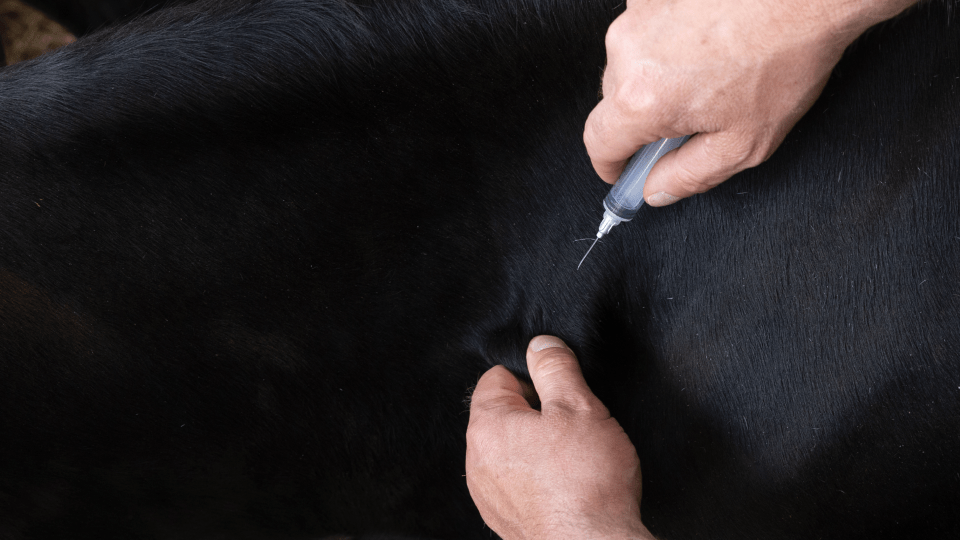How do we keep antibiotics working?
By Dr. Justin Welsh
Antibiotics are a critical tool for livestock producers because, like in humans, they’re used to treat bacterial disease in animals. Without them, people and animals alike can suffer and even die. At a basic level, antibiotics are animal welfare and people welfare medications.
Keeping antibiotics working is a complex topic but antimicrobial stewardship is an effort we all need to be a part of. Livestock producers, veterinarians, medical doctors, animal health companies, pet owners and human patients are all key players in this critical effort to retain the effectiveness of antibiotics. We believe the One Health collaborative approach is critical to attain optimal health for people, animals and the environment.

The fact is the list of new antibiotics for animal agriculture isn’t growing, so what do we do?
Merck Animal Health is part of a global animal health association, Health for Animals, that includes manufacturers of veterinary pharmaceuticals, vaccines and other animal health products throughout the world, as well as the associations that represent companies at national and regional levels. The association has put forth a “Roadmap to Reducing the Need for Antibiotics” that revolves around investing research and energy into three priority areas: prevention, detection and treatment.
Prevention: the first line of defense
Preventing disease through vaccination is one of the best ways to reduce the need for antibiotics. In the U.S. livestock market, this means working with your veterinarian to develop a vaccination program that makes sense based on the disease pressure in your area and evaluating new vaccines as they come to market to advance health programs. In lower- and middle-income countries, there’s a need to improve access to animal health professionals and vaccine availability.
Merck Animal Health is part of an industry-wide effort that’s committed to providing leadership and innovation in bringing new vaccines to veterinarians and producers. As a result, several new vaccines, including intranasal vaccines for cattle, have been brought to market in the past year.
Biosecurity and animal welfare also play critical roles in disease prevention. We know that to successfully immunize cattle, they need to be able to respond to the vaccination. For this to happen, two things need to take place. First, the vaccine must be correctly cared for and administered. Second, the animal must be in a physiological state in which it can respond to the vaccination.
Detection and diagnosing disease
To reduce the need for antibiotics, we also must monitor animal disease and antibiotic usage. Utilizing new technology to see disease occurrence trends and geographies, monitoring and sharing resistance data and how antibiotics are used will be necessary for success. Individual animal monitoring along with better, faster, more specific diagnostic tools all will have positive implications in antibiotic stewardship.
Merck Animal Health has created a new operating unit focused on just this – using data, diagnostics and technical innovation to improve animal health. It includes well-recognized and market-leading brands, including Allflex Livestock Intelligence, Sure Petcare, Biomark, Vaki, IdentiGen and Quantified Ag.
The goal is to provide technologies that give animal caretakers real-time, actionable data to improve or enhance animal management and health outcomes.
Treating by using antibiotics judiciously, responsibly
Even if the best practices and protocols are followed, it’s important to recognize that some animals will still get sick. Thus, the need for treatment will continue. Antibiotics are a key part of animal well-being. Through better training and diagnostics, veterinarians and animal caretakers will be able to make treatment decisions that are more individualized and focused to use the right antibiotic at the right dose, time and route.
This ultimately reduces treatment times and the amount of antibiotic used. To aid in their recovery, animals also need the fundamentals of good animal husbandry – fresh feed, clean water, dry pens and ample bedding.
Combating antimicrobial resistance
Continued efforts to improve prevention, detection and treatment of disease in both animals and humans are hallmarks of a One Health approach to antimicrobial stewardship. We must recognize this is not an issue limited to one species or location, and what we do on the ranch or farm level does matter. Retaining the use and usefulness of antibiotics will require all of us to change our view of how we approach disease.
Find more content for your beef operation.
About the author

Dr. Justin Welsh, D.V.M.
Executive Director, Livestock Technical Services,
Merck Animal Health
